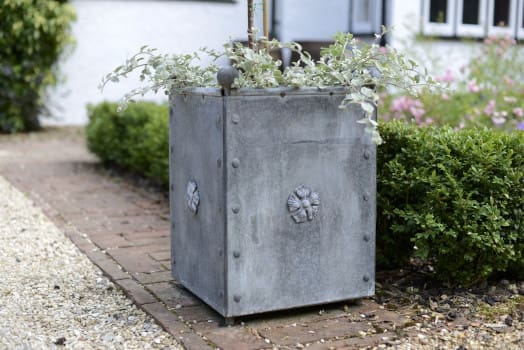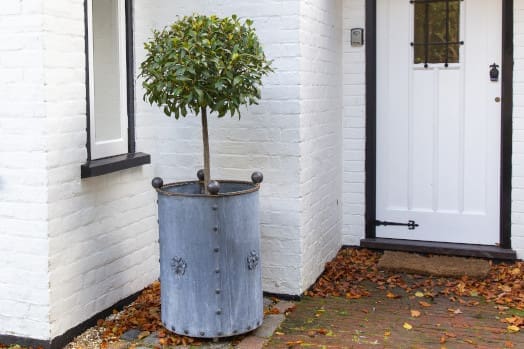
Transforming a large garden planter into a thriving container garden offers both beauty and functionality to your outdoor space. These planters can accommodate a wide variety of plants, allowing you to create a vibrant and diverse garden display. Consider mixing flowering plants like petunias and geraniums with aromatic herbs such as basil and rosemary for a visually pleasing and practical garden.
Choosing plants that thrive in container environments is crucial. Some of the best options for large garden planters include dwarf fruit trees, which can provide fresh produce and a beautiful focal point. Additionally, vegetables like cherry tomatoes, peppers, and lettuce can flourish in these containers, offering a bountiful harvest right outside your door. Ensure that you select plants with similar watering and sunlight needs to promote healthy growth.
A beautiful container garden also benefits from the layering of plants. Include trailing varieties like ivy or vines to spill over the edges, adding dimension and lush greenery. Complement this with taller plants such as ornamental grasses or dwarf shrubs that add height and structure. With careful selection and arrangement, your large garden planter can become a stunning and productive feature in your outdoor space.
Planning Your Garden Planter
For a thriving garden planter, considering size, plant types, and design is essential. Each element plays a crucial role in creating a beautiful and functional container garden.
Choosing the Right Size
Selecting the appropriate size for your planter depends on the types of plants you wish to grow. Larger planters are ideal for plants with extensive root systems, such as Boxwood shrubs or Box as they are generally known and other evergreens. These plants need more space for their root ball to develop.
For those who prefer a mix of various plant types, including both annual plants and perennials, opt for a wide and deep container. This ensures each plant has ample room to grow healthily. Additionally, using natural materials for the planter itself can enhance the garden’s overall aesthetic and support better growth by maintaining a stable environment.
Selecting Types of Plants
Choosing the right plants for your garden planter involves considering the environment and the effect you want to achieve. Evergreen shrubs and plants with evergreen leaves provide year-round interest and are great for sunny spots. Boxwood shrubs are ideal for adding structure and can be complemented with an array of plants but can suffer from box blight which is a fungal infection that’s treatable but todays gardeners tend to choose Yew to create evergreen topiary balls.
Mediterranean and tropical-themed gardens benefit from tall plants and those that thrive in partial shade. For bursts of colour, select colourful flowers and plants with bold colours to create a striking colour palette. Container plants like petunias and geraniums can add a pop of fun colour, while ferns and hostas contribute lush green colours and texture.
Design Considerations
Effective container design involves more than just mixing plants. Consider height variations and place the largest plant at the centre or back, ensuring smaller plants receive sufficient light. This creates an organised and visually appealing container.
Incorporate design elements such as colour variations and textures to add depth. A mix of bright colours and different leaf shapes can provide contrast and interest. Additionally, consider how the planter fits with your overall garden theme—whether it’s modern, traditional, or tropical.
Pay attention to plant care needs, ensuring plants with similar watering and sunlight requirements are grouped together. This supports healthy plant growth and makes maintenance easier.
Optimising Your Planter
Maximising the efficiency of your garden planter involves thoughtful choices about filling materials, ensuring proper drainage, periodic soil replacement, and the use of specific materials like rocks. These steps ensure healthy plant growth and long-lasting planters.
Filling Your Garden Planter Economically
Start with a good-sized container and avoid filling the whole planter with expensive soil. Use heavy pot fillers like green needles, pine cones, or wood logs at the bottom to reduce costs. This method creates a lighter planter and promotes better drainage. Alternatively, Coconut fibre or partially decomposed organic matter from your garden can be an economical filler, providing necessary structure without sacrificing quality.
Ensuring Adequate Drainage
Drainage is essential for plant health. Ensure your planter has a proper drainage hole to prevent excess water accumulation, which could damage roots. Create a layer of rocks or other heavy materials at the bottom to promote excellent drainage. Without adequate drainage, water can stagnate, leading to root rot and other issues.

Arthur Jack galvanised steel planters come with drainage holes pre-drilled and are raised off the ground with feet for perfect drainage.
Take a look at our range of large garden planters here.
Soil and Changing It Annually
Use layers of quality soil and remember the rule of thumb: change the soil annually for the best results. Downloading old soil helps refresh the nutrient profile that’s critical for your plants’ growth. Deep layers of fresh soil allow root systems to grow robustly. Check the soil condition and replenish it as necessary for maintaining plant health.
We recommend a 50:50 mix of compost and top soil in large garden planters.
Utilising Stones and Other Materials
Stones, wood logs, and other materials improve drainage and weight distribution in large garden planter troughs. Bricks, broken tiles, and broken pots are also good options. Heavy materials at the base can also stabilise tall plants and prevent planters from tipping over. You can even use pine cones and nursery pots to create air pockets, enhancing root aeration and overall plant health.
Stones from garden centres can often be obtained from the sea so it’s important to wash them before use to remove any salt residue from them.
Maintenance and Care
Proper maintenance and care are essential to ensure healthy growth and yield from your large garden planter. Focus on watering, root health, and optimal positioning.
Watering and Moisture Management
Managing moisture levels is crucial. In dry climates, you’ll need to water more frequently to maintain medium moisture levels in the soil. Use a consistent watering schedule, ensuring the planter receives water at the base to avoid wet foliage that can foster diseases.
In colder climates, adjust the dose of water to prevent the soil from becoming too saturated. Consider adding mulch on top to retain moisture. Avoid letting the soil dry out completely, especially for plants that require regular moisture.
Root Health and Avoiding Root Rot
Root health is vital for plant growth. Overwatering can lead to root rot, a common issue in large garden planters. Ensure the planter has adequate drainage holes to allow excess water to escape. Elevated planters can also help with drainage.
Use a well-draining soil mix to prevent waterlogging. Check root systems periodically, especially for signs of root rot, such as yellowing leaves or a foul odour from the soil. If detected, reduce watering and improve drainage immediately.
Choosing the Best Position
Choosing the right position for your planter is key. Place it in a sunny spot to maximise sunlight exposure. Some plants, like leafy greens, prefer partial shade or light shade. For plants that grow several feet in height, ensure they have enough vertical space.
Position your planter to receive morning sun in colder climates, helping to warm the soil early in the day. In dry climates, opt for a location with afternoon shade to protect plants from intense heat. This balance helps maintain healthy growth conditions.

Creative Ideas and Inspirations
Using a large garden planter allows for creative combinations and themed arrangements that can transform your space. With the right choices, you can create stunning visual impacts while maintaining functionality and ease of care.
Innovative Container Combinations
Mixing plant types in one planter can create a visually appealing contrast. Combine tall plants like grasses or bamboo with trailing vines for a dynamic look. Bright colours can be achieved with colourful annuals such as petunias or geraniums.
Smaller filler plants like alyssum or calibrachoa complement the main attractions. Choose varieties with delicate leaves for a softer touch. Evergreen foliage plants such as boxwood shrubs maintain year-round interest.
An example combination includes:
- Tall plant: Cannas
- Filler: Dusty miller
- Trailing plant: Sweet potato vine
Themes and Arrangements
Embrace themed garden planters for a cohesive look. Mediterranean and tropical-themed gardens work well in larger planters. Use olive trees, lavender, and succulents for a Mediterranean vibe. For a tropical theme, try palms, ferns, and hibiscus.
Boxwood topiaries create a formal, structured appearance. You could also develop a cool-toned arrangement with blue flowers like hydrangeas and lobelia, complemented by plants with evergreen leaves.
Arrangement ideas:
- Mediterranean: Lemon tree, rosemary, thyme
- Tropical: Bird of paradise, caladium, coleus
Incorporate nursery containers or commercial planters with adequate drainage holes to support healthy plant growth.


Leave a reply